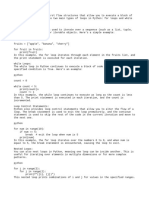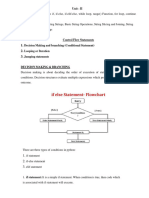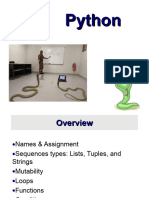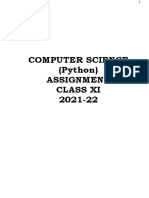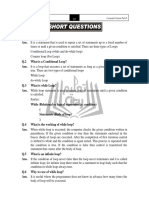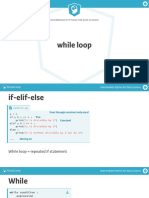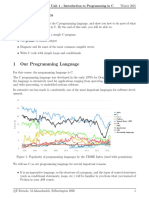0% found this document useful (0 votes)
15 views11 pagesExperiment 5 (For Loop)
The document provides an overview of loops in Python, detailing three main types: for loops, while loops, and nested loops. It includes syntax, examples, and explanations of loop control statements such as break, continue, and pass. Additionally, it covers advanced topics like using else with loops, iterating through dictionaries, and using enumerate().
Uploaded by
Amit kumar DevCopyright
© © All Rights Reserved
We take content rights seriously. If you suspect this is your content, claim it here.
Available Formats
Download as DOCX, PDF, TXT or read online on Scribd
0% found this document useful (0 votes)
15 views11 pagesExperiment 5 (For Loop)
The document provides an overview of loops in Python, detailing three main types: for loops, while loops, and nested loops. It includes syntax, examples, and explanations of loop control statements such as break, continue, and pass. Additionally, it covers advanced topics like using else with loops, iterating through dictionaries, and using enumerate().
Uploaded by
Amit kumar DevCopyright
© © All Rights Reserved
We take content rights seriously. If you suspect this is your content, claim it here.
Available Formats
Download as DOCX, PDF, TXT or read online on Scribd
/ 11




















